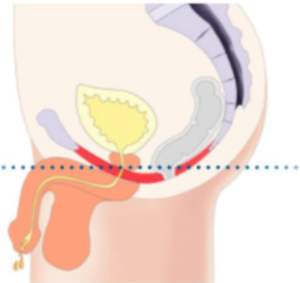
Here’s What a Healthy Pelvic Floor Looks Like
You can’t see your pelvic floor muscles – from the outside, at least. And for many, it may be difficult to feel them. Yet, as we have written in previous blogs, your pelvic floor is responsible for some very important stuff. So how do you know if your pelvic floor is healthy and fit or if it needs care?
For starters, unless you are experiencing symptoms, your pelvic floor is most likely working efficiently, Keeping organs in place, preventing bladder leaks and keeping the sexual function running smoothly – for men and women. What exactly is happening down there when your pelvic floor is not working optimally?
Read This First
Before we dig in, you should know that several conditions could cause symptoms similar to those of pelvic floor dysfunction. Before beginning treatment for any reason, you should be assessed by a pelvic health specialist. They will determine your specific needs to ensure that you get the appropriate care.
In Our Practice…
The clients we treat are those with pelvic muscle imbalances – muscles that are either chronically tight, weakened, or otherwise unable to contract and relax to their full activation potential.
Here’s an illustration showing what weak pelvic floor muscles look like in women. It looks a little bit like a sagging hammock. Notice the little bladder leaks. 🙁

We use electromagnetic stimulation to wake and reactivate the muscles for better tone and resilience. Pelvic floor muscles get back into shape, so they can do the job they are meant to do. After Libby treatments, this is what the muscles look like. No more leaks, better muscle tone, and several other benefits.

Men are Not Immune to Pelvic Floor Dysfunction
While the male pelvis has different equipment, it also houses some of the same bits, including the bladder and anus. Men gain similar benefits from a fit pelvic floor and experience similar problems when it doesn’t function well. This illustration shows weakened pelvic floor muscles in a male.

Electromagnetic stimulation with Libby helps in a similar way, restoring balance to pelvic floor muscles. Now here is what the male pelvic floor looks like after treatment.

When to Get Help for Pelvic Dysfunction
Many people, both men and women, live with the symptoms of poor pelvic health, including urinary incontinence and pelvic pain. They find ways to deal with the urine leaks with absorbent pads and manage discomfort or pain by abstaining from activities that aggravate it. If that sounds like you, it’s time to see a pelvic health specialist because you don’t have to live that way.
Exercise Can Only Get You So Far
A common recommendation to prevent and treat pelvic dysfunction is to do pelvic floor exercises like Kegels. Yes, men can do Kegels too! For women, there are other devices such as Elvie trainers, which also help develop muscle strength. However, Kegels can be difficult to get right, and people tend to quickly fall out of the habit. Ultimately, exercise to resolve pelvic floor dysfunction has limitations and, in some cases, can have an adverse effect.
Libby for the Win
Fortunately, technology is available that can do better than pelvic floor exercise – and there is research to prove it. Libby gets results much faster than Kegels or any other exercise-based treatment can. It’s quick, easy and there’s no need to take off your pants.
The More You Know
Understanding your pelvic floor and how to maintain a healthy pelvic floor is vital to your overall well-being. That’s why we incorporate a pelvic floor assessment and an education program into our standard treatment for pelvic floor dysfunction. Our Libby Chair Pelvic Therapy has helped many people get their lives back, eliminating the need for absorbent pads, reducing pelvic pain and restoring normal sexual function.
We know that talking about these issues is difficult, but you can talk to us. We do our best to make the conversation comfortable and stress-free because no one should feel embarrassed about working towards a better quality of life. Book a consultation with us and start on the path to better pelvic health.
Learn more about our workshops and services

Recent Comments